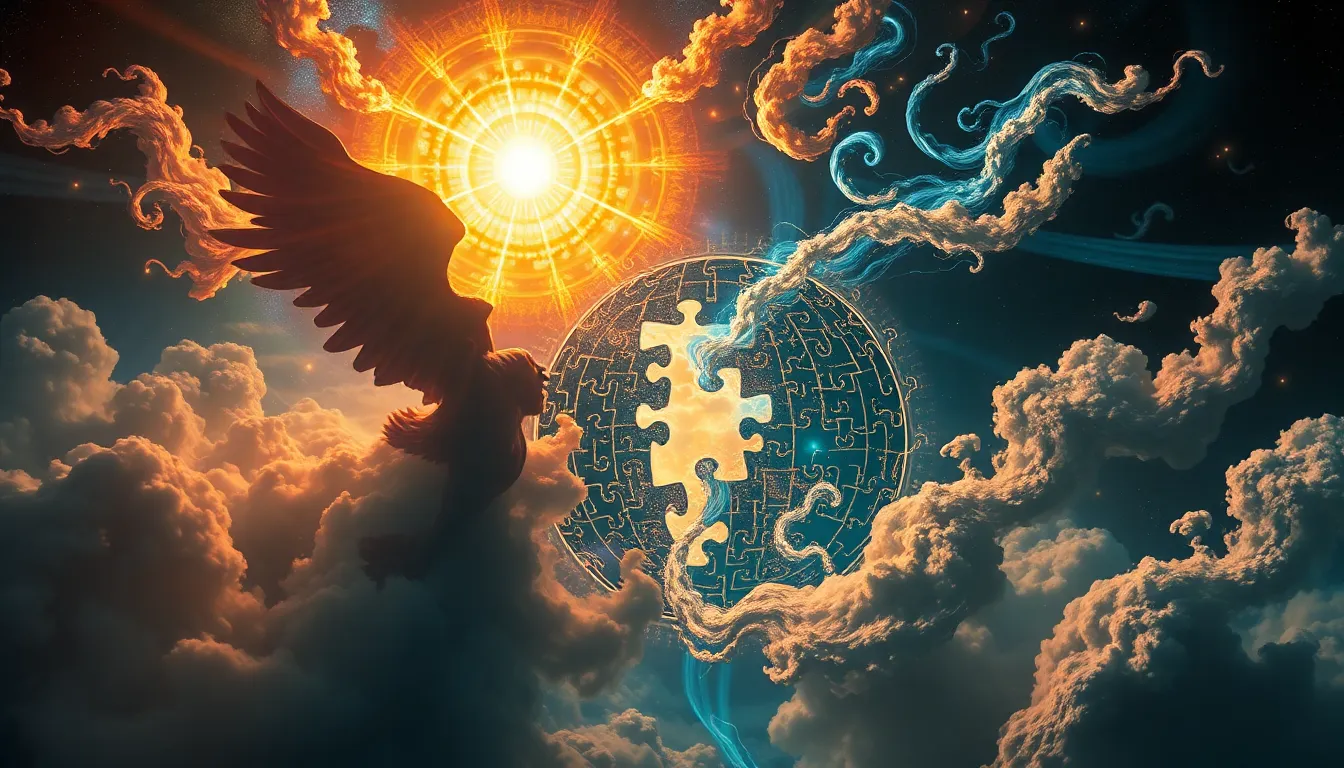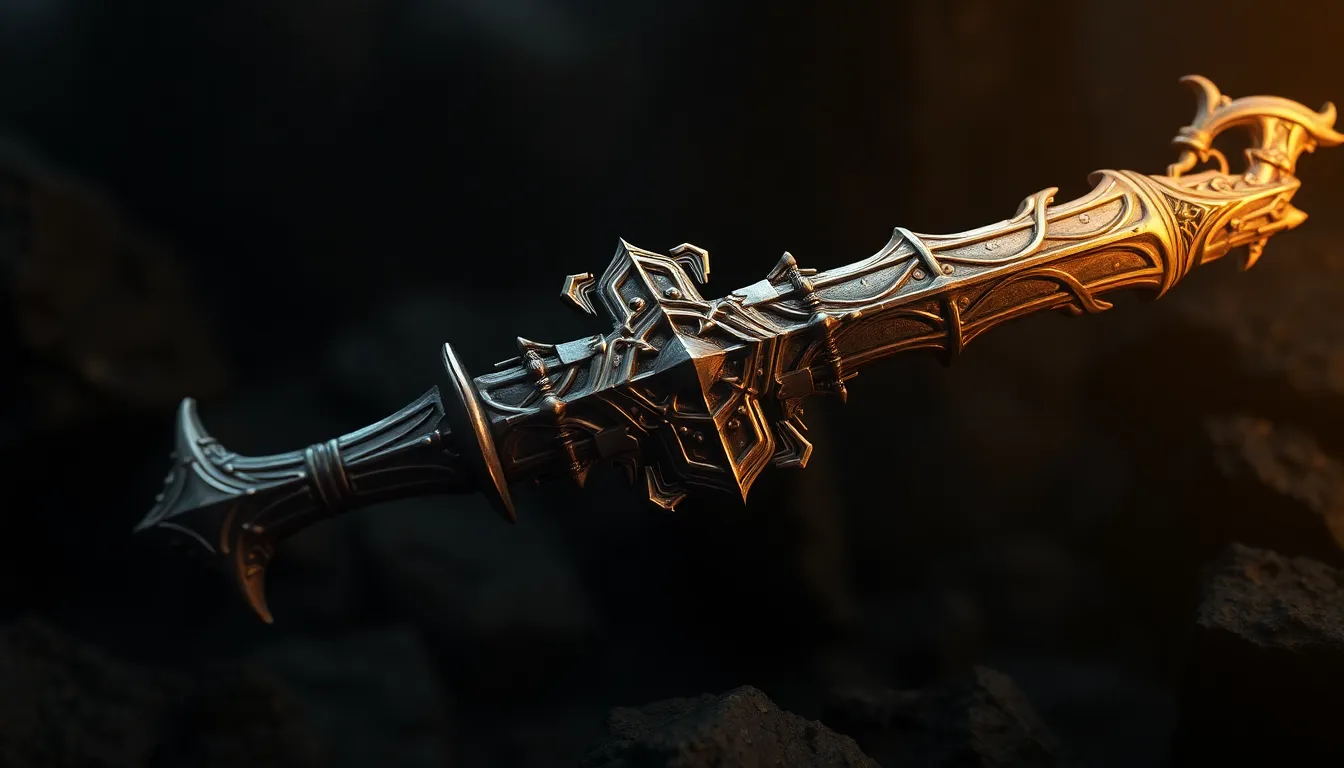The Divine Puzzle: How Creation Myths Piece Together Our Existence
1. Introduction to Creation Myths
Creation myths are foundational narratives that explain the origins of the world, humanity, and the universe. These stories hold significant cultural importance as they encapsulate the beliefs, values, and worldviews of the societies that tell them. From the ancient Mesopotamian tales to the rich narratives of indigenous peoples, creation myths serve not only as entertaining stories but also as profound reflections on existence and our place within it.
The significance of creation myths extends beyond mere storytelling; they provide a framework through which individuals and communities understand their reality. They address fundamental questions about life, purpose, and the cosmos, allowing societies to make sense of their experiences and the world around them.
2. The Universal Themes of Creation Stories
Across cultures, creation myths exhibit common motifs and archetypes that resonate with the human experience. Some of the universal themes found in these stories include:
- Chaos and Order: Many myths begin with a primordial chaos, which is then organized by a divine being or force.
- Divine Beings: Most creation stories feature gods or supernatural entities who play crucial roles in the act of creation.
- Life and Death: Creation myths often address the cycle of life and death, exploring the origins of humanity and the inevitability of mortality.
This exploration of themes highlights the various ways that different cultures interpret the process of creation and the nature of existence itself.
3. Comparative Analysis of Major Creation Myths
Examining prominent creation myths from various cultures reveals both similarities and differences in narrative structure and symbolism. Here are a few notable examples:
- Genesis: The Judeo-Christian creation story portrays God creating the world in six days, culminating in the creation of humanity in His image.
- Enuma Elish: This Babylonian myth describes a battle between gods that results in the creation of the world from the body of the vanquished goddess Tiamat.
- Popol Vuh: The Mayan creation myth tells of the gods attempting to create humans several times before succeeding with a maize-based creation.
While these stories differ in details, they often share common structures such as the presence of a creator deity, the use of elemental forces, and the involvement of chaos transformed into order.
4. The Role of Nature and the Cosmos in Creation Myths
Natural elements such as earth, water, and sky frequently feature prominently in creation myths. These elements are often imbued with spiritual significance, reflecting humanity’s relationship with the environment. For example:
- In many myths, water symbolizes the primordial chaos from which order emerges.
- Earth is often depicted as a nurturing force that sustains life.
- The sky is frequently associated with the divine, serving as a realm for gods and celestial beings.
This connection between creation myths and our understanding of the universe underscores the importance of nature in shaping human identity and culture.
5. The Influence of Creation Myths on Moral and Ethical Frameworks
Creation myths are instrumental in shaping cultural values and societal norms. They often establish moral guidelines and ethical frameworks that govern behavior. For instance:
- The Genesis account emphasizes stewardship of the Earth, influencing Judeo-Christian attitudes towards environmental care.
- Myths like those in the Popol Vuh reflect communal values and the importance of harmony within the community.
These narratives serve as a foundation for contemporary ethics, illustrating how ancient stories continue to resonate with modern moral dilemmas.
6. Creation Myths and Human Identity
Creation myths reflect fundamental aspects of human nature and address existential questions. They explore themes such as:
- The origins of humanity and the purpose of life.
- The struggle between good and evil.
- The nature of existence, including life and death.
By engaging with these narratives, individuals can gain insights into their own identities and the human experience as a whole.
7. The Impact of Creation Myths on Art and Literature
Creation myths have profoundly influenced art and literature throughout history. Many renowned works draw inspiration from these narratives. Examples include:
- The epic poem Paradise Lost by John Milton, which reinterprets the Genesis creation story.
- Pablo Picasso’s Guernica, which, while a response to war, reflects themes of chaos and order reminiscent of creation myths.
This artistic engagement with creation myths demonstrates their lasting power and relevance across cultures and epochs.
8. Psychological Perspectives on Creation Myths
From a psychological standpoint, creation myths can be understood through the lens of the collective unconscious, as proposed by Carl Jung. These myths embody archetypes that resonate with humanity’s shared experiences. They offer insights into:
- Why certain themes recur across cultures.
- The emotional and psychological needs that these stories fulfill.
Psychological interpretations reveal how creation myths serve as a means of processing existential questions and societal anxieties.
9. Modern Adaptations and Reinterpretations of Creation Myths
In contemporary culture, ancient creation myths are often reinterpreted and adapted in various forms, such as film, literature, and art. This reflects an ongoing engagement with these narratives:
- Films like 2001: A Space Odyssey explore themes of creation and evolution, drawing parallels to traditional myths.
- Literary works, such as The God of Small Things by Arundhati Roy, incorporate mythological elements to address modern issues.
The relevance of creation myths in today’s discourse highlights their adaptability and enduring significance, as they continue to inform our understanding of science and spirituality.
10. Conclusion: The Continuing Legacy of Creation Myths
Creation myths are more than just ancient stories; they are vital narratives that shape our understanding of existence. By preserving and studying these myths, we can gain valuable insights into our cultural heritage and the shared human experience. As we navigate a rapidly changing world, the themes and lessons embedded in these narratives will continue to inform our worldview, providing a sense of continuity and connection to our past.
In conclusion, the legacy of creation myths remains strong, offering timeless reflections on life, purpose, and the cosmos, ultimately piecing together the divine puzzle of our existence.




